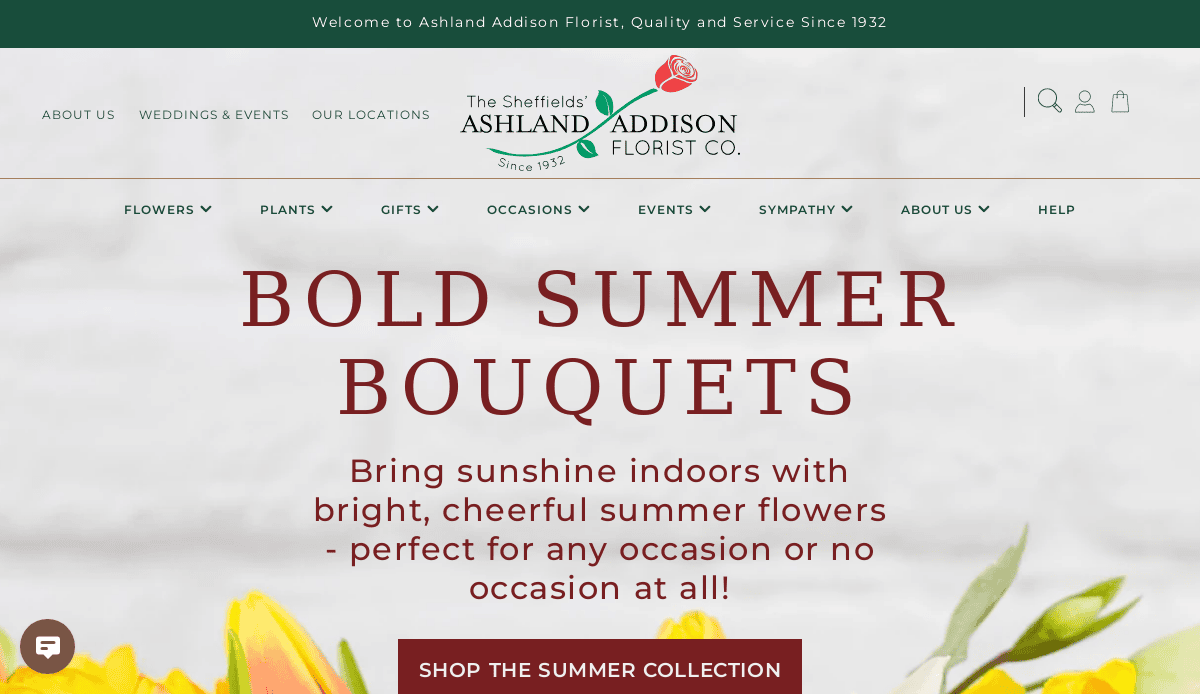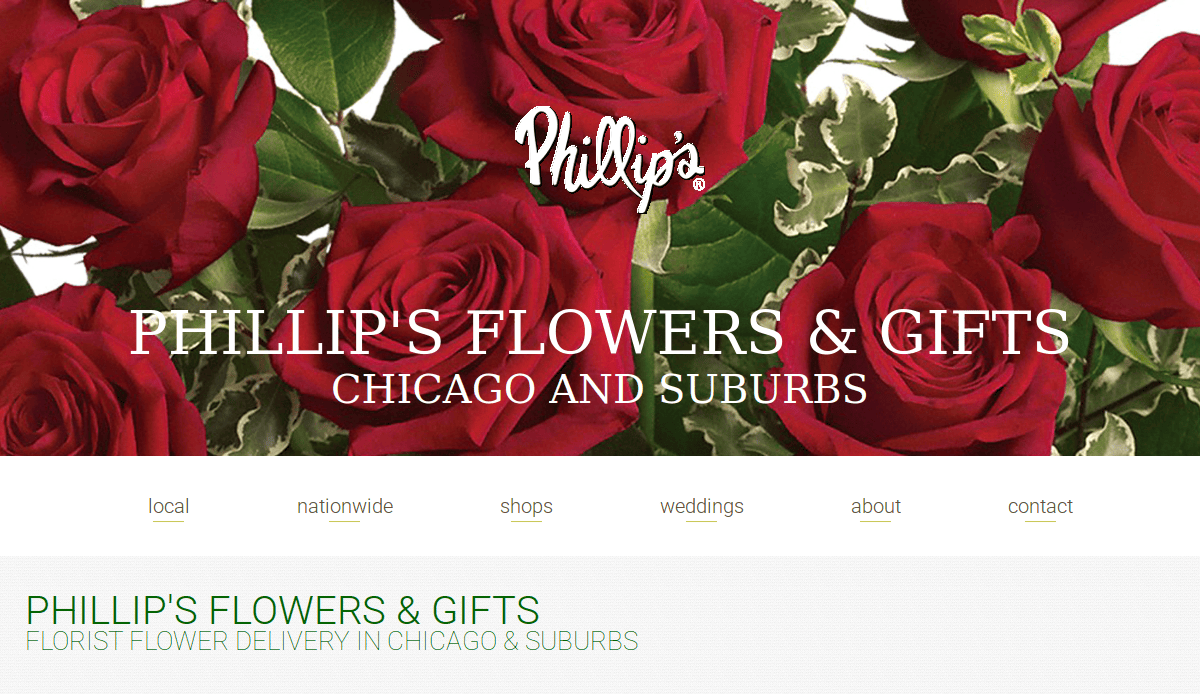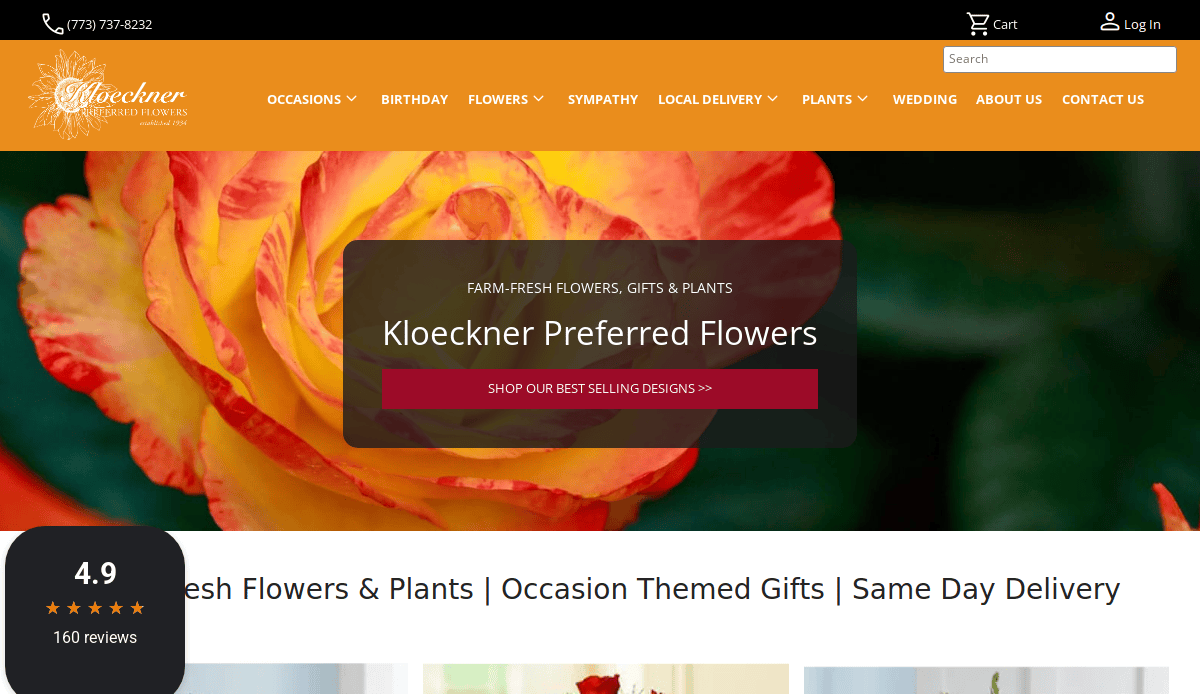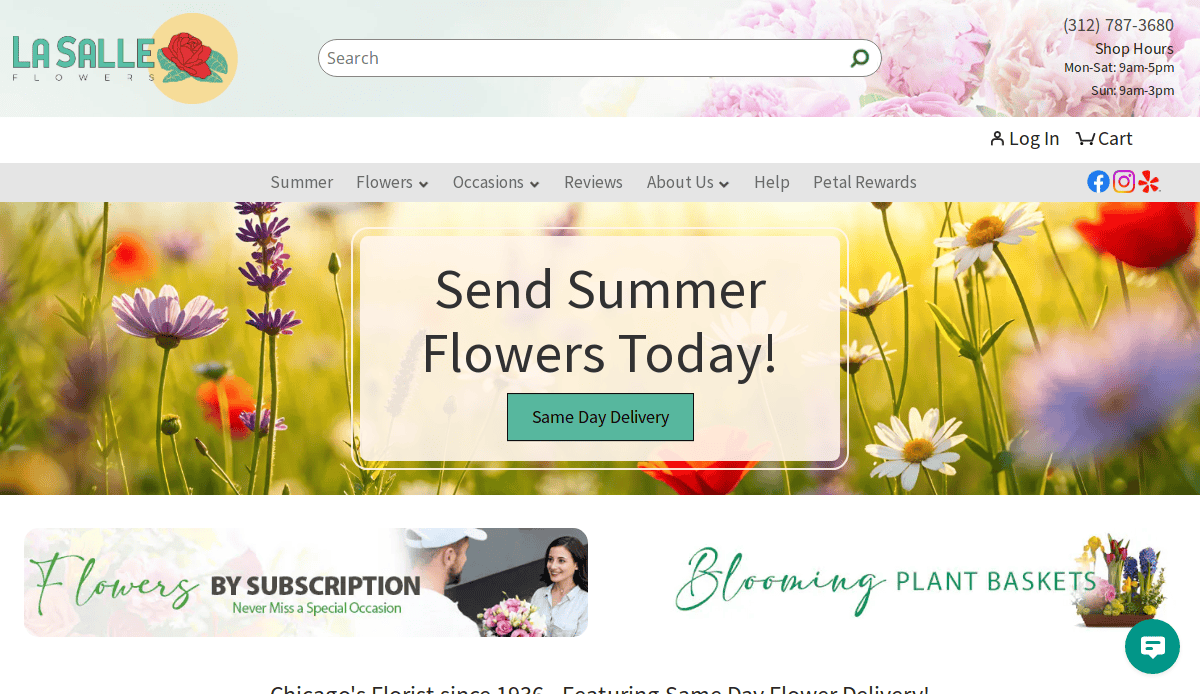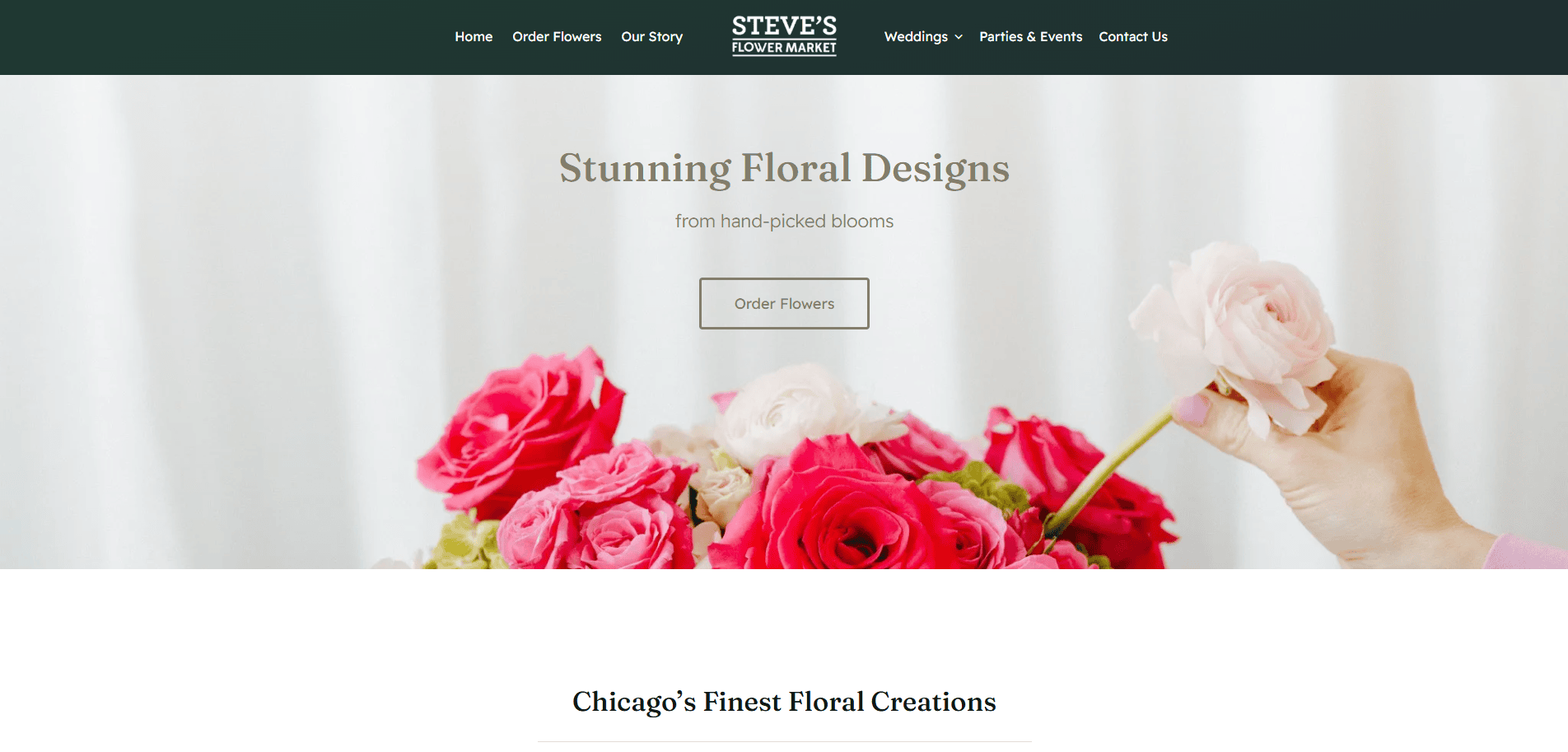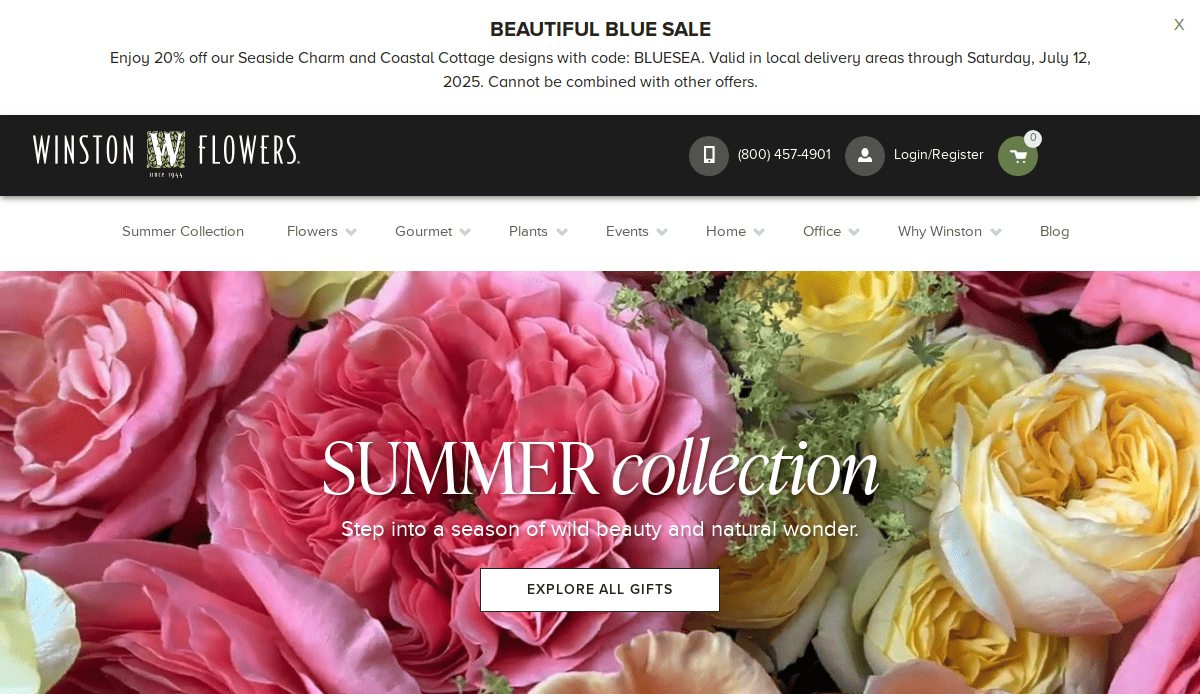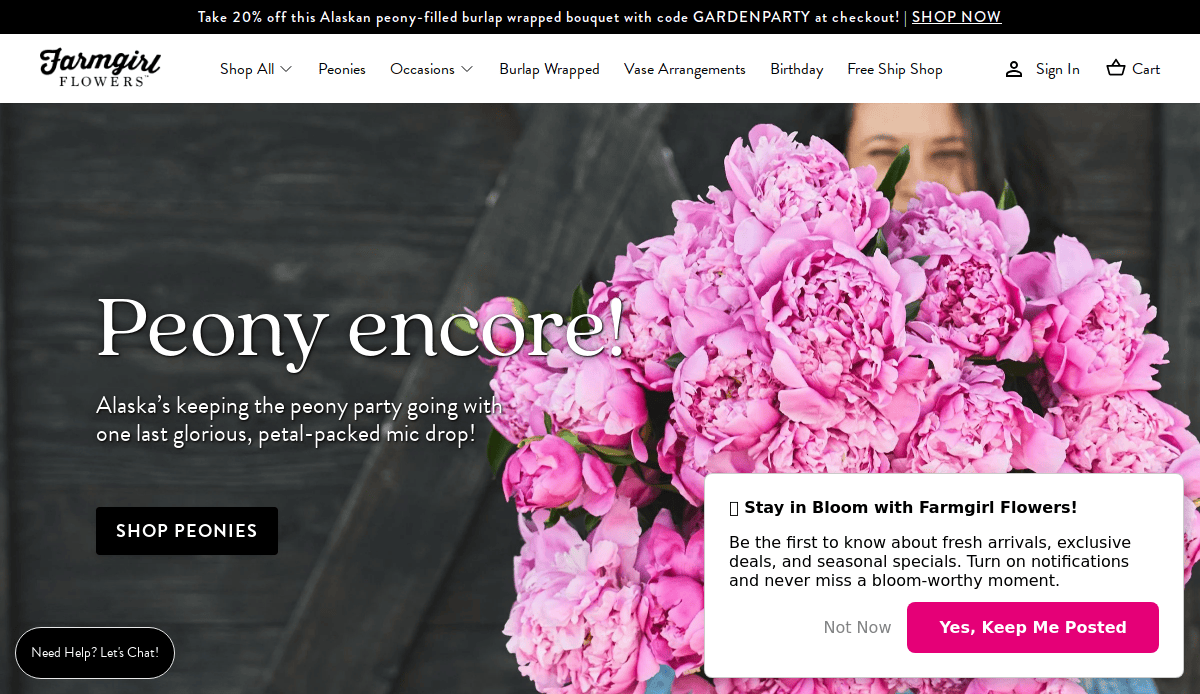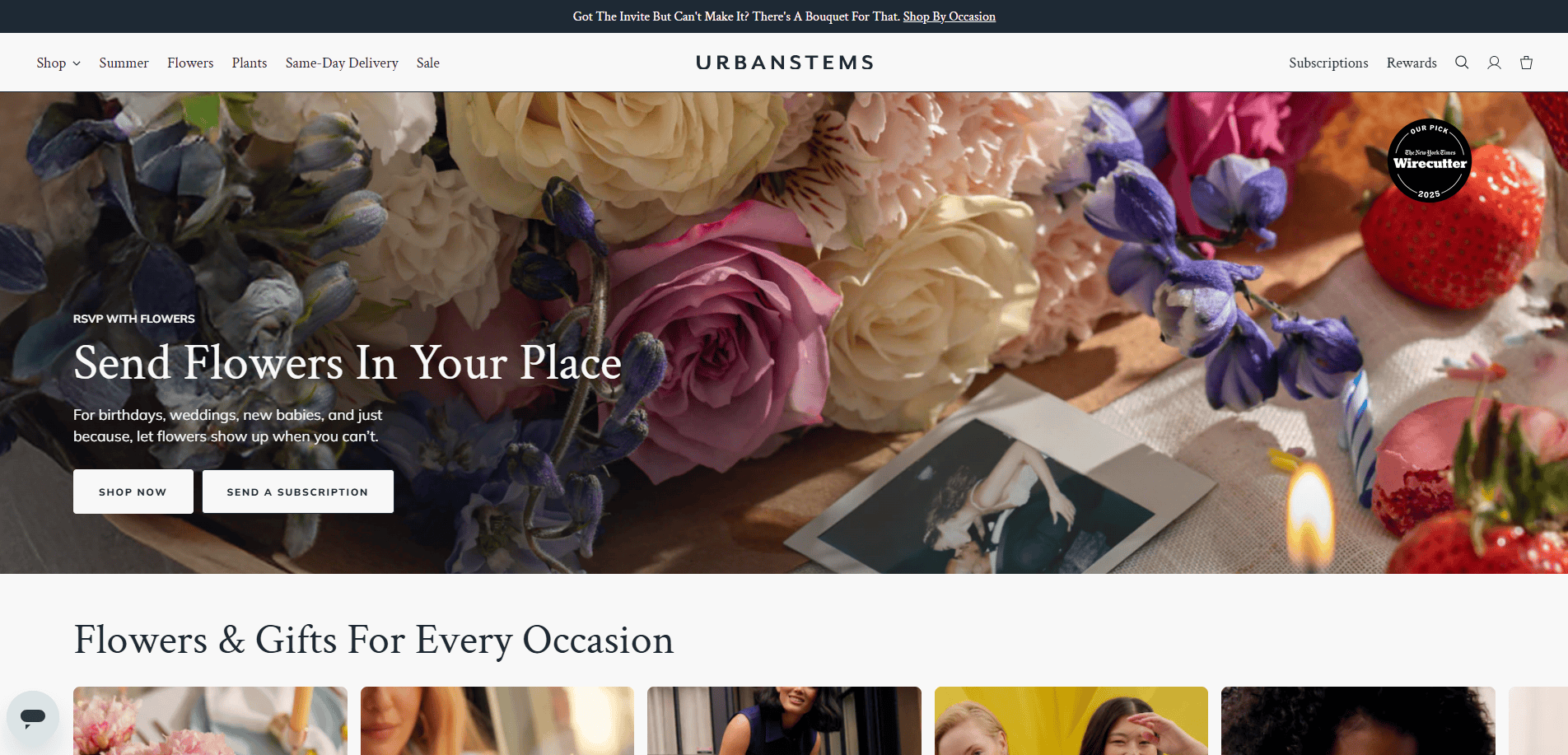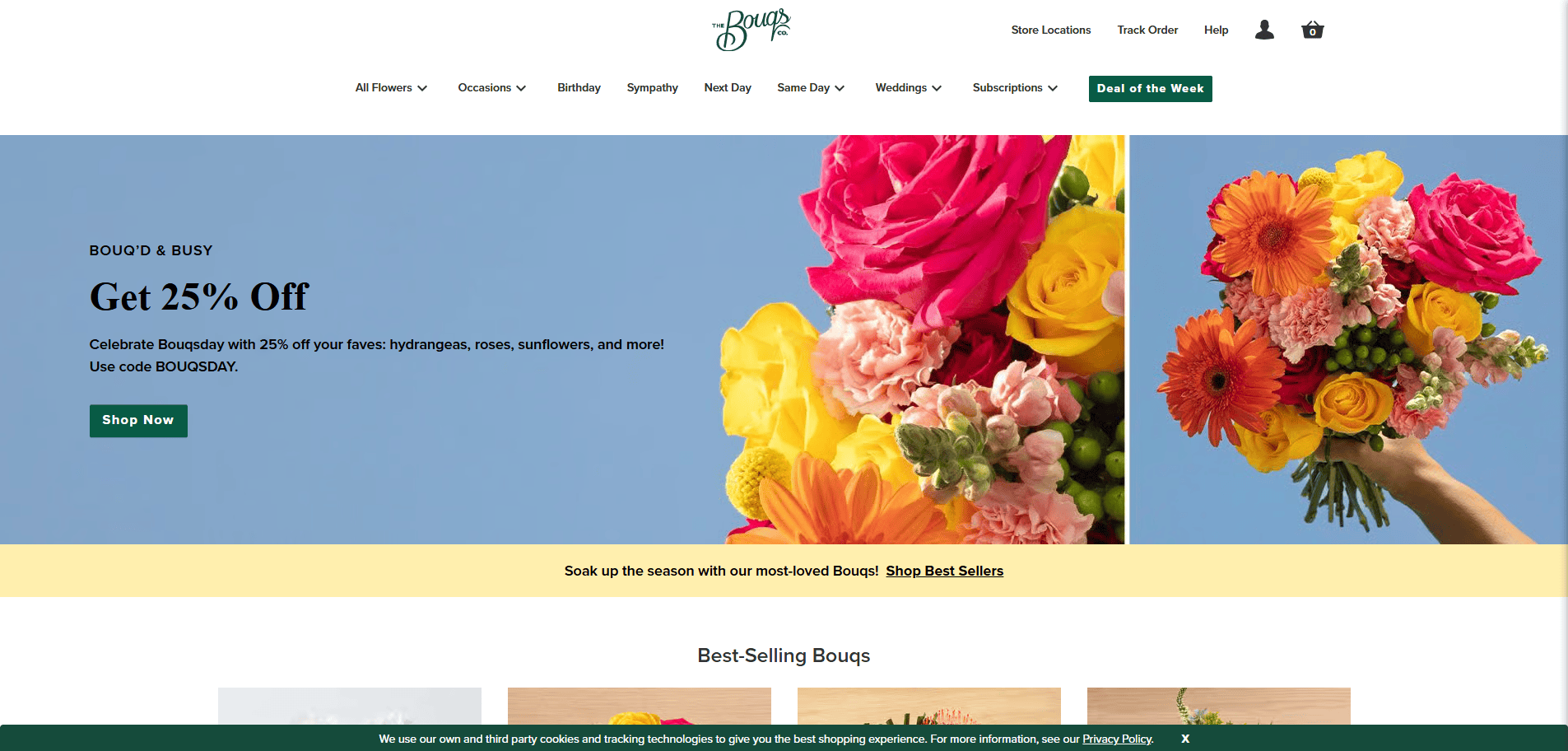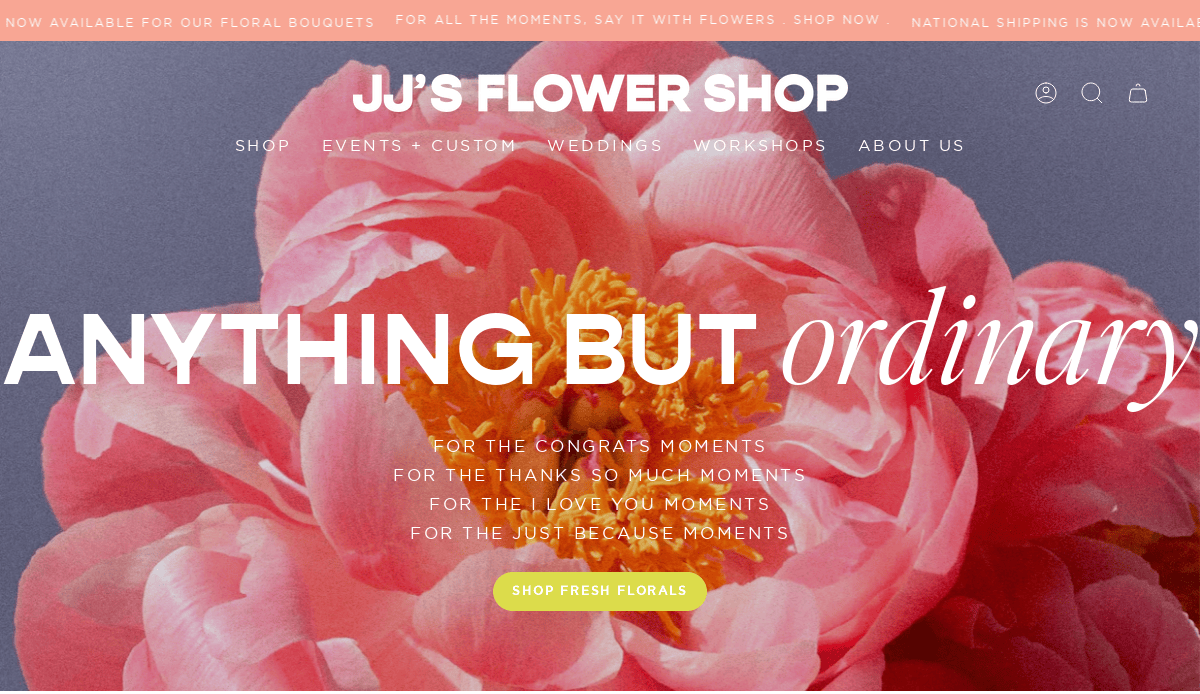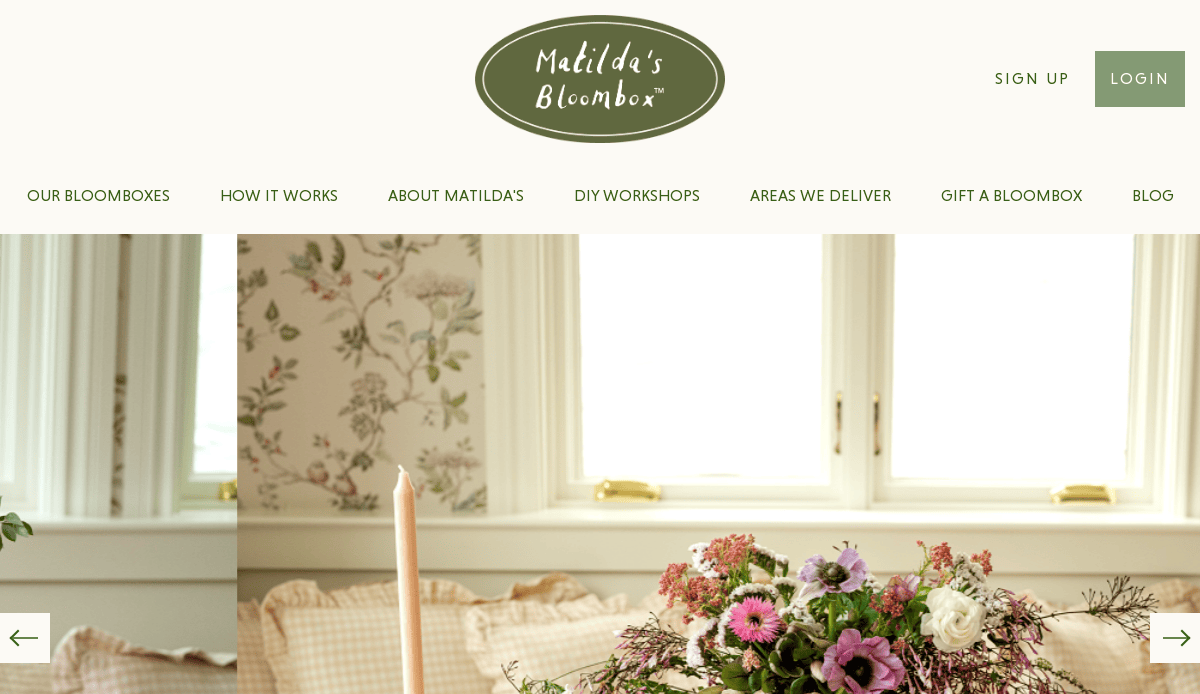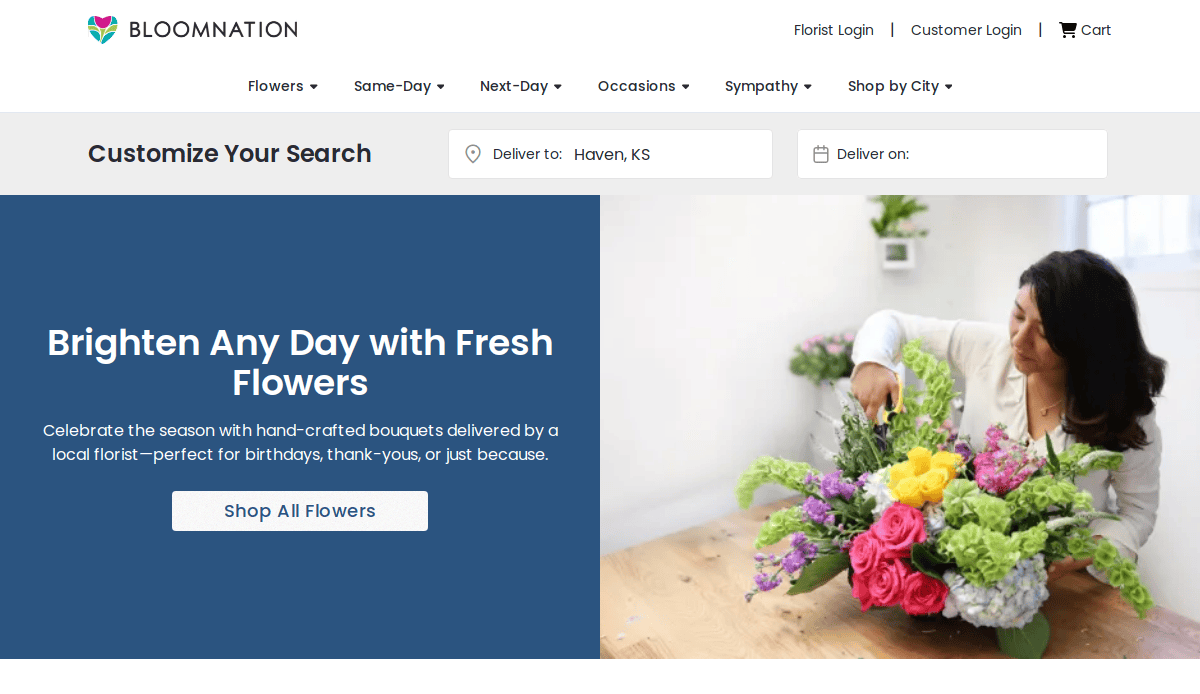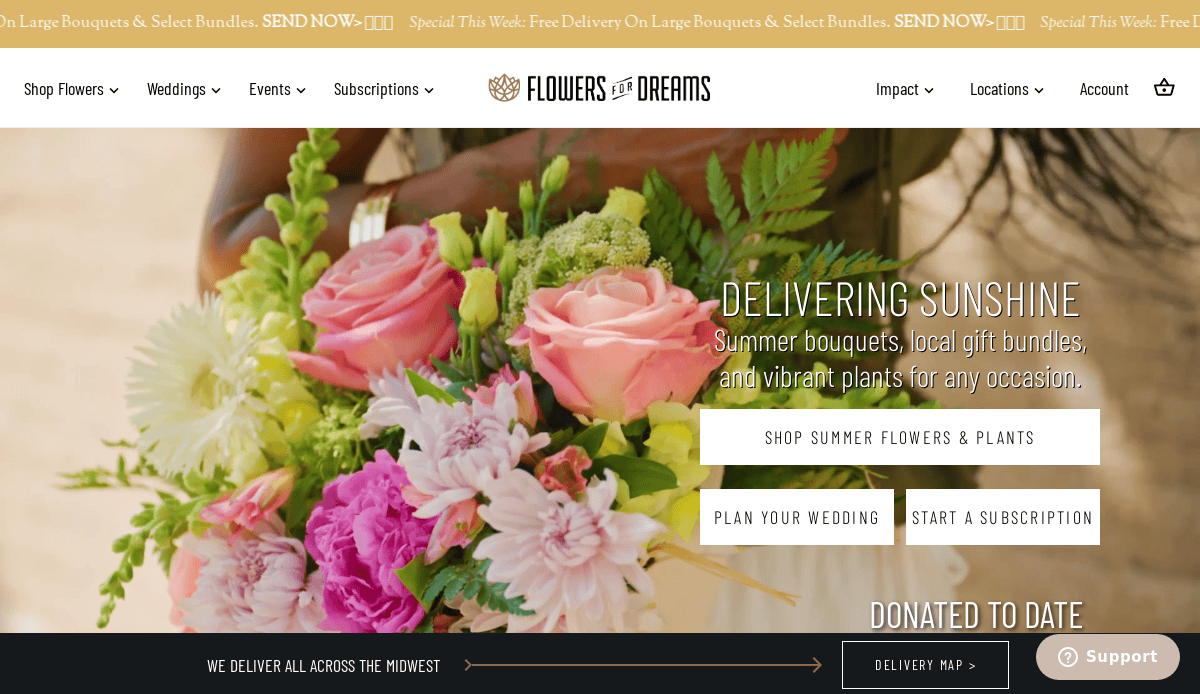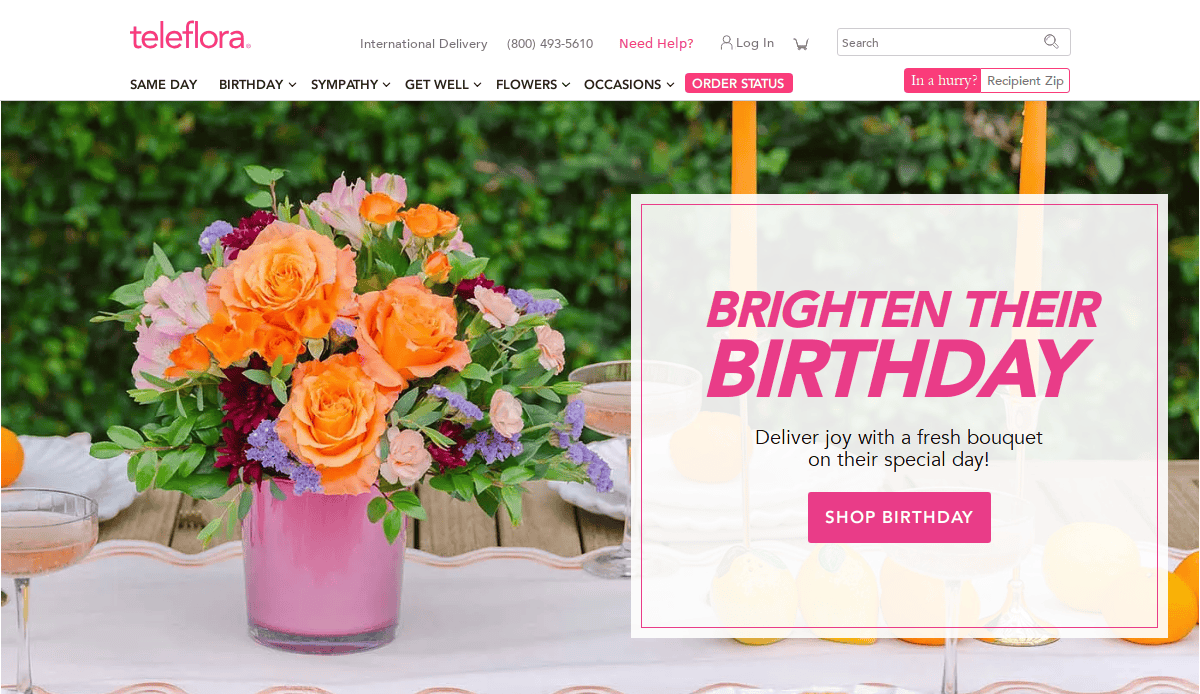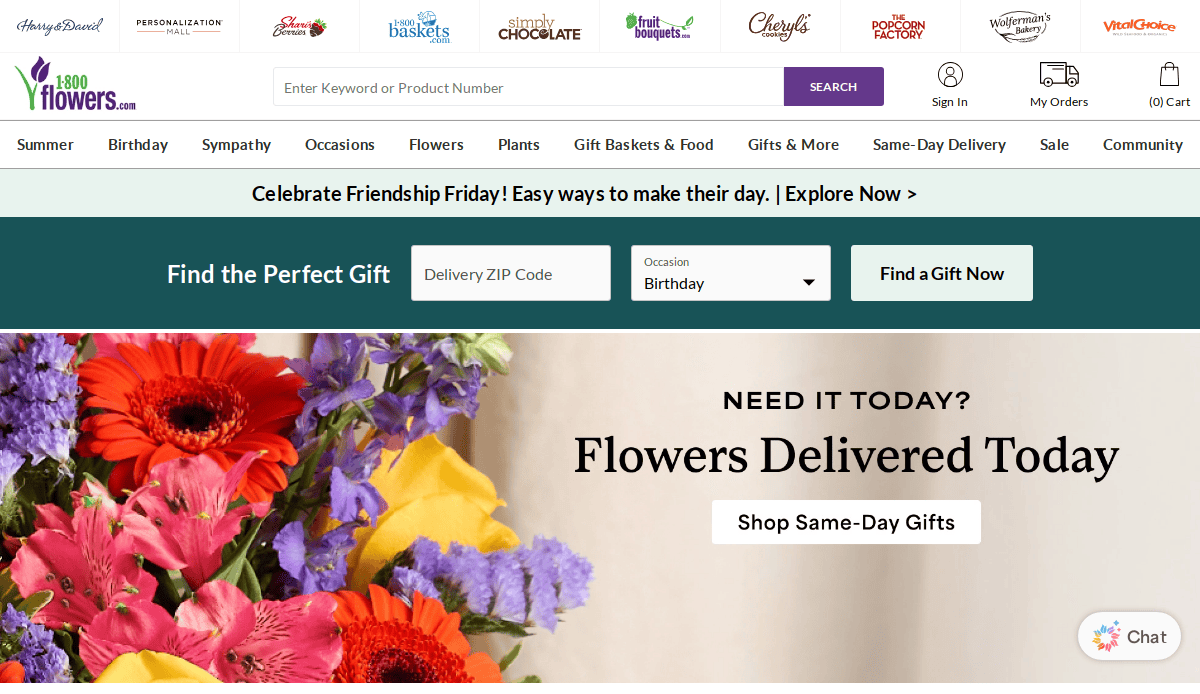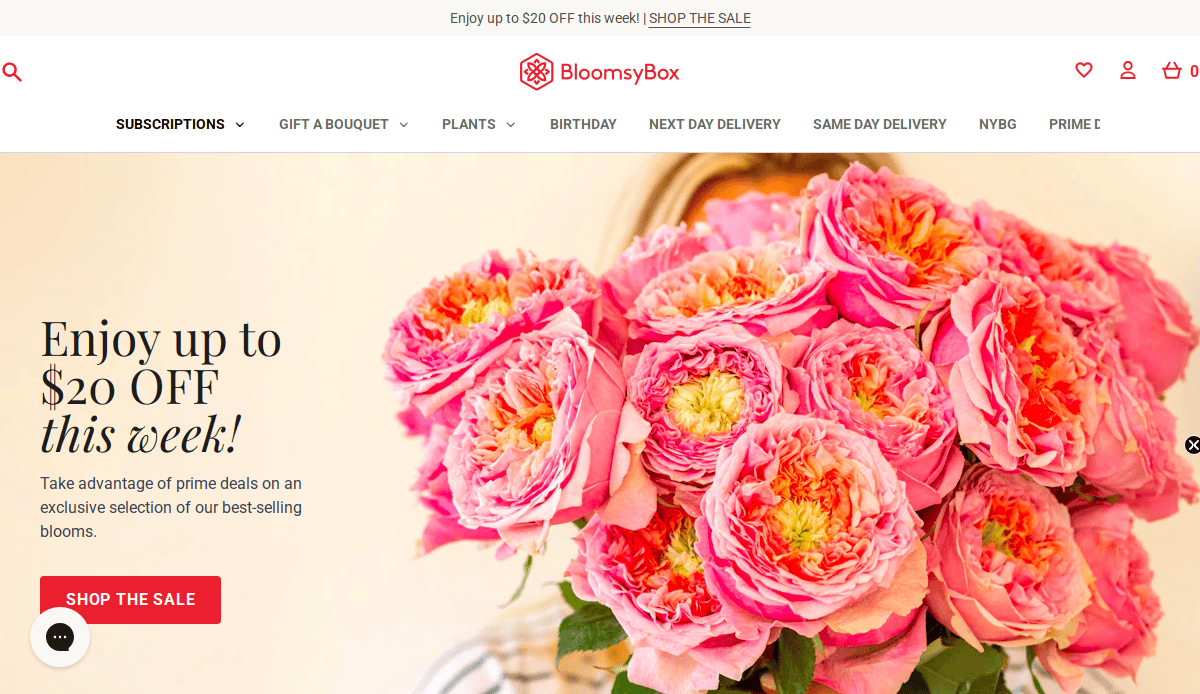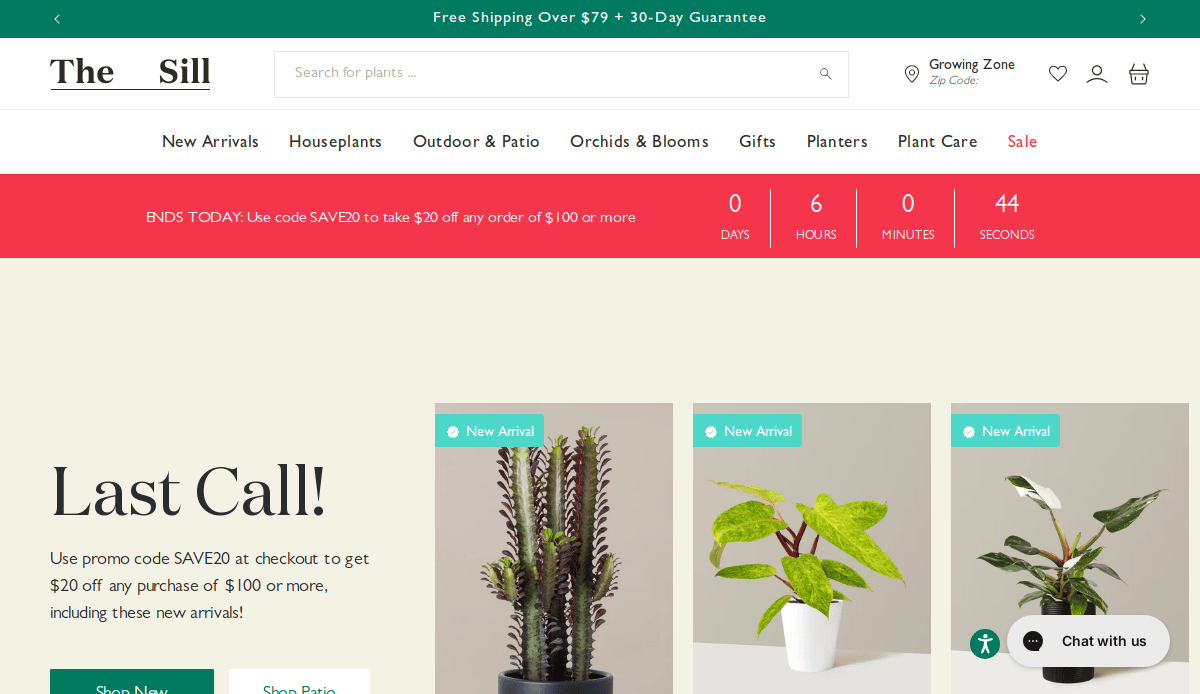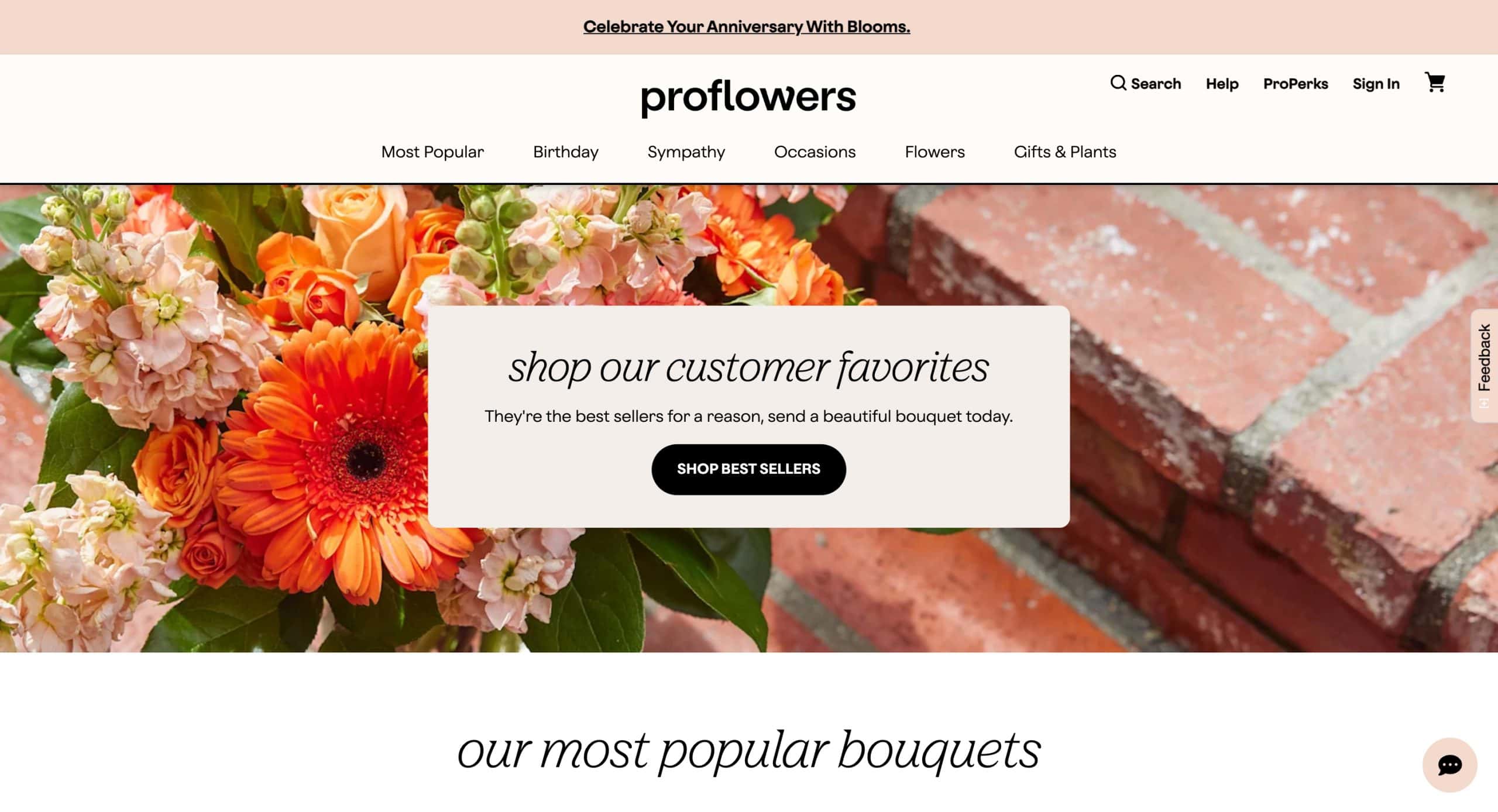Just looking for our Best Florist Website examples list?
Key Takeaways:
As the floral industry evolves, having a compelling online presence is more crucial than ever. Here are the key takeaways to ensure your florist website stands out.
- Embrace Minimalist Design with High-Quality Imagery
Modern websites are adopting clean, simple layouts that highlight the beauty of floral arrangements through large, high-quality images. This approach allows the products to shine and creates an immediate visual impact, enhancing user engagement. - Enhance E-commerce Functionality
With the rise of online shopping, it’s essential to integrate robust e-commerce features into your website. This includes real-time stock updates, user-friendly product sections, and seamless checkout processes to improve the customer experience and drive sales. - Implement Local SEO Strategies
Optimizing your website for local search is vital. Ensure your business appears in local search results by claiming and updating your Google Business Profile, using location-specific keywords, and encouraging customer reviews. - Prioritize Mobile-First Design
With a significant portion of web traffic coming from mobile devices, designing your website with a mobile-first approach ensures accessibility and a better user experience across all devices. - Focus on Fast Loading Times
Website speed is a critical factor for user retention and SEO. Optimize images, leverage browser caching, and minimize code to ensure your site loads quickly, providing a smooth experience for visitors. - Incorporate Clear Calls-to-Action (CTAs)
Guide your visitors towards desired actions by using clear and compelling CTAs. Whether it’s making a purchase, signing up for a newsletter, or contacting you for custom arrangements, effective CTAs can significantly boost conversions. - Utilize Social Proof
Displaying customer testimonials and reviews builds trust and credibility. Highlight positive feedback prominently on your website to reassure potential customers of your quality and service. - Maintain Consistent Branding
Ensure that your website’s color schemes, fonts, and messaging align with your brand identity. Consistent branding fosters recognition and trust among your audience. - Offer Valuable Content
Providing informative content, such as flower care tips or arrangement guides, positions your business as an authority in the floral industry and can improve SEO rankings. - Regularly Update Your Website
Keep your website content fresh and up-to-date. Regular updates signal to search engines that your site is active, which can positively impact your search rankings.
By focusing on these key areas, your website can attract more visitors, provide a better user experience (UX), and ultimately drive more sales.
Why Every Florist Needs a Stunning Website Design to Thrive
Today, a florist’s website is a primary sales tool and a reflection of your floral brand. Whether you’re a boutique flower shop offering artisanal bouquets or a larger floral business managing multiple locations, your website is often the first impression customers get. And in an industry built on beauty and emotion, first impressions are everything.
Great website design doesn’t just look pretty. It drives results. From seamless navigation and captivating imagery of floral arrangements to clear descriptions and smooth checkout flows, every element impacts the user experience. A mobile-friendly, e-commerce-ready florist website can mean the difference between a browser and a buyer.
But that’s not all—your digital storefront also affects your visibility. A well-optimized site aligned with SEO best practices ensures your flower business appears in local search engine results when potential customers are searching for “online flower delivery” or “florist near me.” If your site isn’t built to rank, you’re missing out on valuable traffic and revenue.
This guide dives into what makes a website truly high-performing, from design foundations to search visibility. Whether you’re launching a new site or reimagining your current one, this is your blueprint for growing your floral business online.
Website Planning & Purpose: Building the Foundation for Your Site
Before a single image is uploaded or a description is written, every successful website begins with a clear, strategic plan. The planning phase is where goals are defined, audiences are understood, and the purpose of the website is crystallized. This foundational step sets the tone for everything that follows, especially in a highly visual, emotion-driven industry like floral design.
For florists, the website’s purpose usually revolves around a mix of goals: showcasing floral arrangements, enabling online flower orders, attracting local customers through search engine visibility, and simplifying the shopping experience for both first-time and returning buyers. Without clearly defined objectives, your website may end up looking beautiful but failing to convert.
Start by identifying what role your website will play in your business. Are you looking to drive walk-in traffic to your physical location? Do you want to increase e-commerce sales for seasonal bunches and custom arrangements? Are you targeting wedding clients or corporate floral contracts? Each of these goals will shape everything from the layout and navigation to your keyword strategy and call-to-action buttons.
This is also the time to evaluate competitors, define your brand voice, and map out the content and features you’ll need—from galleries of floral arrangements to appointment booking tools and blog sections that boost SEO. You’ll want to create a sitemap, wireframes, and user journey flows that reflect the behavior of your target customers, whether they’re browsing for a quick birthday arrangement or planning floral décor for an entire event.
To dive deeper into the planning process, visit our step-by-step guide to the web design process, which breaks down every stage from concept to launch. Taking the time to get this phase right ensures your website is more than a pretty face—it becomes a powerful tool for growth.
Design Principles for High-Performing Websites
The best websites don’t just showcase beautiful floral arrangements—they’re also built on strong, strategic design principles that enhance usability, boost engagement, and drive conversions. While every business has its own unique aesthetic, there are several universal design guidelines that elevate both the look and performance of a flower shop’s online presence.
Visual Hierarchy and Simplicity
A website must be visually inviting while guiding users effortlessly through the experience. Effective use of white space, clear typography, and a prioritized layout ensures that your most important content—like bunch categories, special promotions, or delivery details—is front and center. Visual hierarchy helps users understand where to look and what action to take, whether that’s browsing your latest arrangements or placing an order.
Brand Consistency and Emotional Design
Floristry is a deeply emotional industry. Your website’s design should evoke the same feelings as receiving a grouping of flowers: joy, elegance, and connection. From the logo and color palette to the font choices and tone of your messaging, everything should reflect your brand. Consistent branding builds trust and helps visitors remember your business long after they’ve left your site.
Mobile-Friendly, Responsive Layouts
Today, most customers are browsing from their phones. If your website doesn’t adapt beautifully to mobile devices, you’re not just losing traffic—you’re losing sales. A responsive design ensures that every page, image, and button scales perfectly on smartphones and tablets, offering a seamless shopping experience across all screen sizes.
Ease of Navigation and Accessibility
Shoppers should be able to find what they need in seconds. Clear navigation menus, intuitive category pages, and prominent calls-to-action help users quickly browse flower arrangements, read product descriptions, and check out. Accessibility features like alt text for images and high-contrast text also ensure your site is usable by everyone, including those with disabilities.
Performance and Load Speed
A slow website can drive potential customers away. Optimizing image sizes, minimizing code bloat, and leveraging modern hosting platforms all contribute to a faster site, essential for both UX and SEO performance.
For a deeper dive into design fundamentals, visit our guide to core principles of web design. Following these principles ensures that your website looks stunning and functions as a reliable, high-converting digital storefront.
Content & Navigation: Structuring for a Seamless Floral Shopping Experience
For a website to convert casual visitors into loyal customers, the structure of its content and navigation must be clear, intuitive, and purpose-driven. In an industry where aesthetics matter just as much as functionality, the way content is organized directly impacts how visitors experience the brand, and whether they stick around to buy.
Homepage That Tells a Story
Your homepage is your storefront window. It should immediately communicate who you are, what you offer, and how your business stands out. Highlight key categories like seasonal bouquets, event arrangements, and delivery options. Feature best-selling items, promotions, or customer testimonials with links to deeper pages for details.
Clear Navigation That Reflects Buyer Intent
The main menu should be simple and predictable, guiding visitors to where they want to go in one or two clicks. Core categories for a florist website might include:
- Shop by Occasion (e.g., Birthday, Sympathy, Anniversary)
- Shop by Product (e.g., Bouquets, Plants, Floral Subscriptions)
- Weddings & Events
- About Us
- Contact or Location Info
- Delivery Details
Dropdown menus, if used, should be short and clearly labeled. Avoid burying key pages under layers of navigation—customers won’t dig.
Content That Informs and Converts
Your product pages should do more than list prices. Include rich product descriptions that highlight arrangement details, flower types, size options, and care instructions. This improves search engine optimization (SEO) and helps customers feel confident in their purchase. Add high-quality images with zoom functionality, reviews, and delivery/pickup information.
Supplemental content like blog posts or flower care tips can support long-term optimization and provide added value. A blog can also position your business as an expert in the industry, especially if you include seasonal guides, floral trends, or event planning insights.
Contact and Delivery Info That’s Easy to Find
One of the most common visitor goals is to find out where you’re located, how to reach you, or when flowers can be delivered. Place this information in the main menu or as a persistent footer element. Include a dedicated Contact or Delivery page with clear, concise details.
Strategic CTAs and Internal Linking
Guide users to the next step using clear calls-to-action (CTAs) like “Shop Now,” “Browse Bouquets,” or “Book a Consultation.” These CTAs should be visually distinct and placed throughout the site, not just on product pages. Internal linking between related pages (e.g., linking a blog post on wedding trends to your wedding floral services page) improves optimization and keeps users exploring longer.
For more on designing for clarity and usability, read our article on best practices in web design for enhancing user experience. An intuitive structure isn’t just helpful—it’s essential for a website that converts visits into orders.
Visual Elements: Crafting a Floral Brand That Speaks Without Words
In this industry, visuals are everything. Customers are not just buying flowers—they’re buying a feeling, an experience, and a reflection of a moment. That’s why the visual elements play a critical role in both UX and brand perception. A beautifully designed website with carefully curated visuals can instantly establish trust, evoke emotion, and guide the customer through their journey with ease.
High-Quality Photography as the Hero
Every successful website begins with strong photography. Large, high-resolution images of your beautiful arrangements—whether it’s a romantic bouquet or an intricate event installation—should be prominently featured. Each image should be styled and lit to highlight texture, color, and craftsmanship. These images are not just decorative—they are your primary sales tool. Customers rely on them to understand size, style, and quality, especially when shopping online.
Consistent Visual Branding
Visual consistency across the site reinforces your business’s identity. Color palettes, font styles, and graphic accents should align with your physical branding, logo, and store aesthetic. A luxury floral studio might favor muted tones and serif fonts, while a bold event florist could opt for vibrant colors and modern typography. Consistent styling helps users recognize and remember your brand.
Visual Hierarchy for Flow and Focus
A clean layout with defined visual hierarchy ensures that users are naturally drawn to key elements, like CTAs, product highlights, or seasonal promotions. Use larger fonts and bolder colors for important messages. Secondary elements, like testimonials or blog links, should be styled to support without distracting.
Use of White Space and Minimalism
White space, or negative space, creates breathing room between elements and helps draw attention to your most important content. Where visuals are already rich and colorful, minimalist design allows each arrangement to stand out without visual clutter.
Supporting Elements: Icons, Video, and Animation
Icons can guide users without taking up much space—think truck icons for delivery info or a heart for customer favorites. Background videos showing a florist at work or a time-lapse of a bouquet being assembled can humanize your brand. Subtle animations—like hover effects or fading transitions—can enhance interactivity and make browsing feel smooth and refined.
Mobile-Optimized Visuals
Your visual strategy must consider mobile users. All images, graphics, and videos should load quickly, scale correctly, and maintain clarity on smaller screens. Cropped or distorted visuals can damage credibility and lead to abandoned visits.
When thoughtfully executed, visual elements do more than beautify—they build brand trust, guide customer behavior, and elevate the entire shopping experience. For florists, this makes the difference between a site that simply exists and one that sells.
Ongoing WordPress Maintenance: Keeping Your Site Running Smoothly
Launching a beautiful, high-performing website is only the beginning. To ensure it continues to attract visitors, convert sales, and represent your brand effectively, ongoing WordPress maintenance is essential. Neglecting maintenance can lead to broken features, slow load times, security vulnerabilities, and missed sales opportunities—problems that no business can afford.
Regular Software Updates
WordPress websites rely on core software, themes, and plugins to function. These elements need frequent updates to remain compatible, secure, and efficient. Ignoring updates can cause conflicts that break features like your e-commerce cart, image galleries, or contact forms. A well-maintained site always runs the latest stable versions, keeping everything in sync and operational.
Security Monitoring and Protection
A website often handles sensitive customer data through order forms and payment gateways. Ongoing maintenance includes implementing and monitoring security protocols such as firewalls, malware scanning, and login protections. These measures help protect your site from hacks and downtime, which can damage your reputation and interrupt your business.
Site Speed and Performance Optimization
Maintaining fast load times is crucial for both UX and rankings. Regular maintenance includes optimizing image files, cleaning up outdated plugins, and managing database performance. A sluggish site frustrates customers, increases bounce rates, and lowers your position in search results.
Backups and Recovery Plans
Things go wrong—whether it’s a plugin conflict or a user error that takes your site offline. Ongoing maintenance ensures that your website is backed up regularly and can be restored quickly if needed. Automated daily backups and a structured recovery process minimize downtime and protect your business from extended disruptions.
Content and Product Management
A product catalog is constantly evolving with seasons, events, and trends. Ongoing maintenance includes updating product pages, swapping out outdated promotions, and refreshing optimized content to align with current offerings. This keeps the site relevant and engaging for repeat customers.
Analytics and Tracking
Part of maintaining a WordPress site is reviewing how it performs. Maintenance includes monitoring traffic patterns, conversion rates, and user behavior. These insights inform strategic updates—like simplifying the checkout flow or refining offering descriptions—to boost results over time.
Ongoing WordPress maintenance ensures your website stays secure, optimized, and aligned with your business goals. Rather than treating it as a one-time project, it should be viewed as an investment in long-term digital success.
20 Top Florist Website Design Examples
1. Ashland Addison Florist
Location: Chicago, IL
Key Takeaways:
- Clean, modern design with intuitive navigation.
- High-quality imagery showcasing floral arrangements.
- Integrated online ordering system for customer convenience.
2. Phillip’s Flowers
Location: Chicago, IL
Key Takeaways:
- User-friendly layout with clear calls-to-action.
- Responsive design optimized for mobile devices.
- Detailed product descriptions enhance SEO.
3. Kloeckner Preferred Flowers
Location: Chicago, IL
Key Takeaways:
- Elegant design reflecting brand identity.
- Easy-to-navigate catalog of floral products.
- Integrated blog providing floral care tips.
4. LaSalle Flowers
Location: Chicago, IL
Key Takeaways:
- Vibrant visuals highlight floral arrangements.
- Streamlined checkout process for online orders.
- SEO-optimized content targeting local customers.
5. Steve’s Flower Market
Location: Chicago, IL
Key Takeaways:
- Minimalist design focusing on product imagery.
- Mobile-friendly interface enhances user experience.
- Clear information on delivery and services offered.
6. Winston Flowers
Location: Boston, MA
Key Takeaways:
- Sophisticated design aligning with luxury branding.
- Comprehensive portfolio showcasing floral designs.
- Integrated e-commerce platform for seamless ordering.
7. Ode à la Rose
Location: New York, NY
Key Takeaways:
- Chic, Parisian-inspired website design.
- High-resolution images enhance product appeal.
- User-friendly navigation with categorized offerings.
8. Farmgirl Flowers
Location: San Francisco, CA
Key Takeaways:
- Rustic aesthetic reflecting brand ethos.
- Eco-friendly messaging is integrated into the design.
- Simplified shopping experience with curated selections.
9. UrbanStems
Location: Washington, D.C.
Key Takeaways:
- Modern, clean design appeals to urban clientele.
- Subscription options are prominently featured.
- Interactive elements enhance user engagement.
10. The Bouqs Co.
Location: Los Angeles, CA
Key Takeaways:
- Bright, vibrant visuals capture attention.
- Emphasis on sustainable sourcing practices.
- Streamlined navigation facilitates quick purchases.
11. JJ’s Flower Shop
Location: Atlanta, GA
Key Takeaways:
- Playful design reflecting brand personality.
- Clear product categorization aids user navigation.
- Mobile-optimized layout ensures accessibility.
12. Matilda’s Bloombox
Location: San Francisco, CA
Key Takeaways:
- DIY-focused design encourages user interaction.
- Clean layout highlighting product offerings.
- The subscription model is clearly explained and accessible.
13. BloomNation
Location: Santa Monica, CA
Key Takeaways:
- Marketplace-style design connecting local florists.
- Robust search functionality enhances user experience.
- Detailed florist profiles build customer trust.
14. Flowers for Dreams
Location: Chicago, IL
Key Takeaways:
- Minimalist design emphasizing social impact.
- Transparent pricing and donation information.
- Easy navigation with clear product categories.
15. Petal Republic
Location: New York, NY
Key Takeaways:
- Editorial-style layout offering floral insights.
- Comprehensive guides enhance user knowledge.
- Clean design facilitating content consumption.
16. Teleflora
Location: Los Angeles, CA
Key Takeaways:
- An extensive network of local florists is integrated.
- User-friendly interface with occasion-based navigation.
- Prominent display of same-day delivery options.
17. 1-800-Flowers
Location: Carle Place, NY
Key Takeaways:
- Robust e-commerce platform with diverse offerings.
- Personalization features enhance UX.
- Comprehensive customer support and tracking.
18. BloomsyBox
Location: Miami, FL
Key Takeaways:
- Subscription-based model clearly presented.
- Clean, modern design focusing on product imagery.
- Educational content on floral care and selection.
19. The Sill
Location: New York, NY
Key Takeaways:
- Minimalist design highlighting plant offerings.
- Educational resources supporting customer engagement.
- Seamless integration of e-commerce functionalities.
20. Proflowers
Location: Chicago, IL
Key Takeaways:
- Rustic, authentic design aligning with brand values.
- Emphasis on sustainability and ethical sourcing.
- Curated selections simplify customer choices.
Ready to Build a Stunning Florist Website That Sells?
Whether you’re an established flower store or just beginning to set up an online flower shop, your website is your most valuable digital asset. A well-designed website showcases your beautiful flower arrangements and powers your online store to sell floral gifts 24/7. From local florists offering free delivery to floral designers preparing for peak wedding and event seasons, a responsive website is no longer optional—it’s essential for florists who want to stay competitive and grow online.
If you’re serious about growing your floral business website with strong SEO, seamless online ordering, and a design that truly reflects your brand, it’s time to partner with a team that knows this space inside and out.
Ready to elevate your online flower shop’s performance? Request a free website strategy session with our talented experts and take the first step toward a florist website that truly blooms.
Frequently Asked Questions About Florist Website Design
What should be included on a florist shop website?
It should include high-quality images of floral products, detailed product descriptions, a clear call-to-action, and online ordering functionality. Essential pages include Home, Shop, About, Contact, Delivery Info, and a floral design portfolio. To help your website bloom, consider integrating a blog with practical tips and SEO-focused content.
Can I use a website builder for my floral website?
Yes, a website builder like Shopify or WordPress is ideal for floral e-commerce. These platforms offer flexible templates, integrated online store features, and robust website management tools. Shopify is especially popular for its ease in setting up an online store to sell floral products. Be sure to choose a builder that supports responsive design and secure checkout options for your online flower store.
How important is SEO for a floral website?
SEO is crucial for attracting customers searching for flowers online. It helps your business’s website rank on Google, increasing traffic and online sales. Optimize each page on your website with relevant keywords, location tags, and product categories to attract flower lovers and local retail florists alike. It also supports long-term website building by ensuring your content reaches more people organically.
What is the best domain name for my flower company?
Your domain name should reflect your brand and be easy to remember. Ideally, it should include keywords like “flowers,” “floral,” or your location if you’re targeting a local audience. For example, www.ChicagoGardenStyle.com is better than www.CGS123.com. Keep it short, relevant, and brand-consistent across your floral ecommerce channels.
How do I showcase my floral design portfolios online?
Creating a dedicated page on your website for your florist portfolio is one of the best ways to build trust and attract new customers. Include high-resolution images from past weddings, events, or custom floral displays. Structure it by theme (e.g., romantic, garden style, seasonal) and include client testimonials where possible.
Do I need special website hosting for an ecommerce website?
Yes. A floral e-commerce website requires reliable website hosting with high uptime, fast loading speeds, and security features such as SSL certificates. Hosting impacts your user experience and SEO performance, so choose a provider that supports your site’s growth and seasonal traffic spikes, especially during holidays or peak floral delivery periods.
Can I add floral design classes or flower services to my site?
Absolutely. Many businesses expand their offerings by promoting floral design classes, workshops, or custom flower services. Use your website to create a dedicated section or landing page for events, class schedules, and online registration. This diversifies your revenue and deepens your connection with flower lovers and your local community.
How can I make my online flower store stand out?
Differentiate your online flower store by offering a seamless user experience, standout product photography, engaging product descriptions, and a brand voice that resonates with your target audience. Incorporate both free and paid promotions, feature seasonal floral displays, and build authority through blog posts and social media integration. The goal is to create a website for your business that sells and tells a story.
What if I’m not tech-savvy and want help building my site?
You’re not alone. Many retail florists prefer partnering with experts who handle the technical details of website building. Our top-tier digital marketing agency offers tailored web design and management solutions that ensure every floral element of your online presence is optimized—from domain name setup to ecommerce functionality and ongoing support.
Is this guide helpful for both new and established flower businesses?
Yes, this comprehensive guide will help both startups looking for floral website basics and established shops aiming to refresh a complex website. Whether you’re exploring how to set up an online store or looking for floral-specific digital strategies, this includes important tips for every stage of your business’s website lifecycle.

